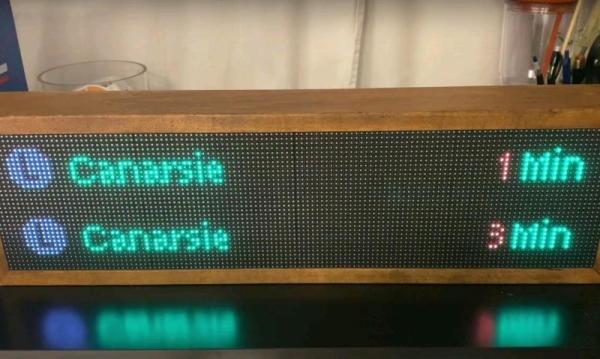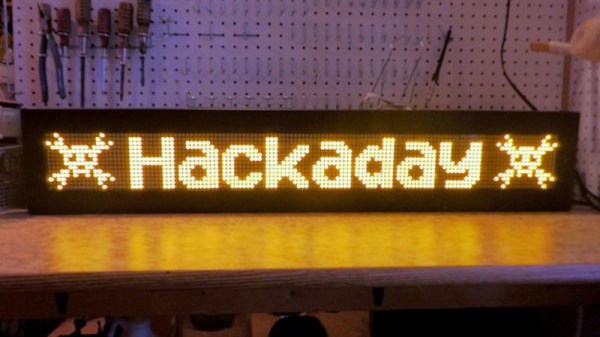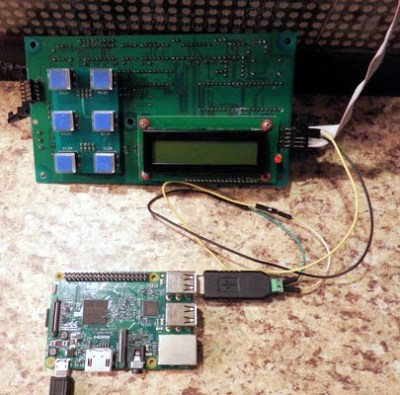What happens when someone’s personal project is turned into a startup which becomes something of a publicity darling, then collapses with very little product shipped and takes all its customers’ money with it?
That’s the subject of a blog post from [Kevin Chung], who investigated the legacy of NYCTrainSign, a company whose product was an LED NYC subway sign and which has become a meme byword for a startup scam. Along the way he found himself reverse engineering its API, and eventually even purchasing the expired domain name to resurrect the API for any NYCTrainSigns that may still be out there.
Securing a second-hand NYCTrainSign, he dismantled it to see what made it tick. Inside the handmade wooden case was an array of LED panels, driven by a Raspberry Pi 3 and an Adafruit LED panel HAT. This gave pause for thought, as the component choice gives rise to a very high BoM cost which was unsustainable given their habit of steep discounts.
The software proves straightforward enough to reverse engineer, and since the original domain was for sale he bought it and set up a replacement API. Do you have one of the few signs that made it to customers? Now you can run it again.
The rest of the piece tells a tale that will be familiar to startup veterans: one of far too much marketing, too many bosses, and too little engineering to create a viable product. The founders remain tight-lipped about what happened and where the money went, but since there are few more efficient money pits than a badly-run startup, it’s more likely that ill-advised spending is to blame than someone running off with suitcases of cash.
If you’d like a public transit sign without the dodgy start-up, we’ve got you covered.


















